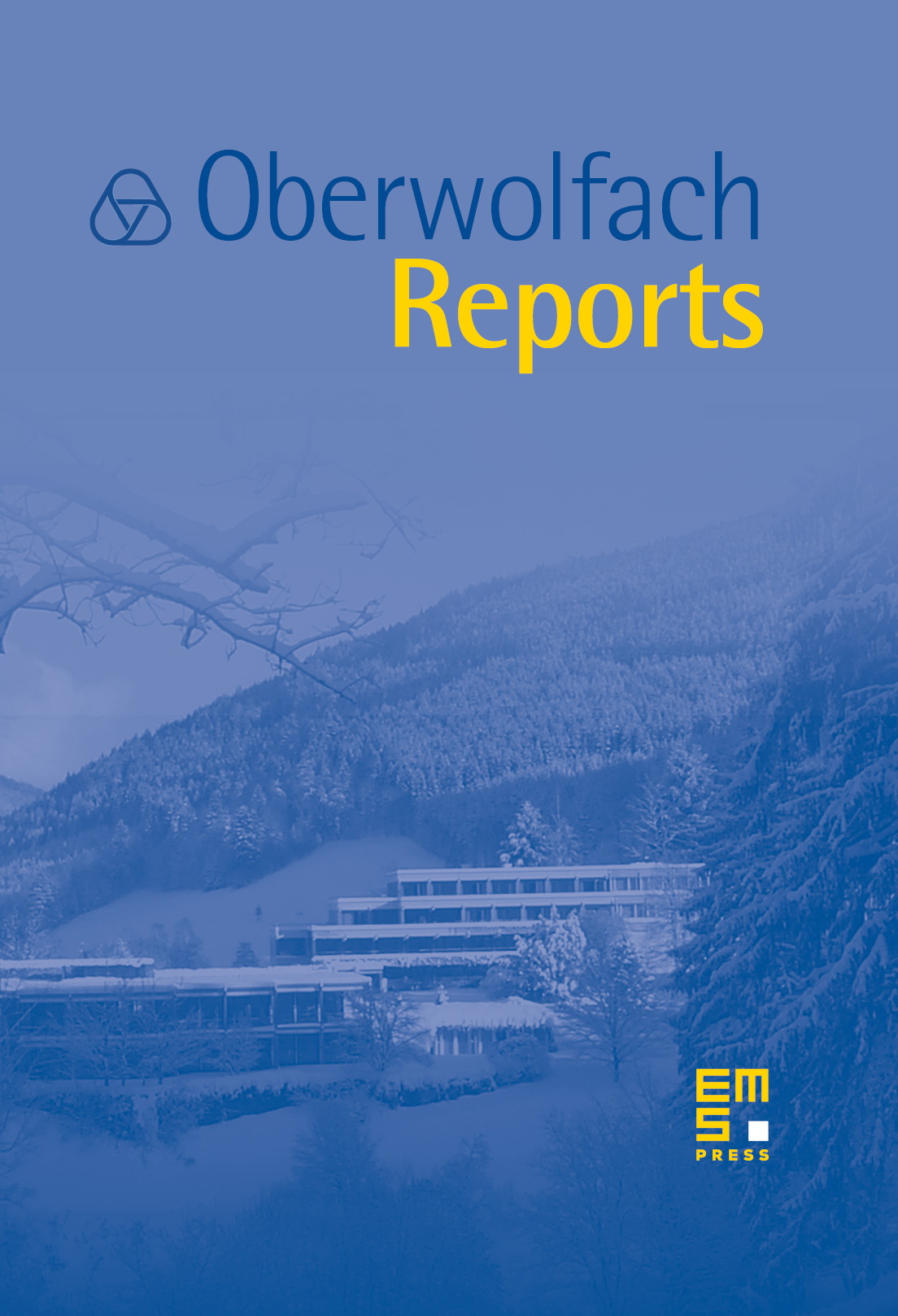Trends in Mathematical Imaging and Surface Processing
Vicent Caselles
Universitat Pompeu-Fabra, Barcelona, SpainGerhard Dziuk
Universität Freiburg, GermanyMartin Rumpf
Universität Bonn, GermanyPeter Schröder
California Institute of Technology, Pasadena, USA

Abstract
In the area of image and surface processing a real interplay between engineers, computer scientists and mathematicians has been occuring over the last decade. Even though the application areas differ significantly, the methodological overlap is enormous. Contributions to the field come from almost any discipline of mathematics. A major role is played by partial differential equations and in particular by geometric and variational modeling. We see increasing numbers of examples of work in imaging and computer graphics which significantly improve the state of the art techniques developed in traditional disciplines and in particular inspire novel work in mathematics. Some of the many examples discussed during the workshop include the global minimization of new functionals based on methods from discrete optimization theory, the modeling and treatment of manifold topology based on projections, or subtle subdivision techniques to ensure curvature continuity in surface modeling.
The intention of this workshop was to further stimulate the exchange of new methodology and ideas. The workshop brought together mathematicians working on the calculus of variations, on differential and discrete geometry, on partial differential equations, and on numerical analysis with leading experts in computer graphics, image processing and computer vision. In addition about ten junior researchers joined the workshop in a lively interplay with more senior participants.
The role of geometry, analysis and numerical analysis for PDE-based image and surface models is of central importance. Many of the models involve minimizing geometric functionals of first (area) or second order (Willmore-functional). The role of analysis is to predict the qualitative behaviour of solutions of the resulting highly nonlinear partial differential equations. Lectures on thresholding approaches, level set methods and max flow - min cut algorithms were dealing with this topic. Numerical analysis plays a decisive role in the derivation and construction of efficient and robust algorithms. For instance, efficient numerical schemes for the restoration of destroyed or missing areas in images and the error control for discretization of total variation functionals in imaging were addressed in lectures during the workshop. A particular focus was on the solution of geometric partial differential equations and the minimization of geometric functionals and their discretization, which leads directly into extremely difficult analytic problems and questions of convergence of the corresponding discrete schemes. Extensive discussions occurred regargind the question of conversion of analytical and geometric insights into fast and effective algorithms for challenging applications such as the design of glass roofs, the extraction of motion fields from image sequences, the similarity analysis of shapes or the topological persistent fairing of surfaces from 3D scanning devices, and many others.
Aside from 20 main lectures, junior participants presented their own work in a special two hour session through a series of short presentations:
- Leah Bar (Minneapolis) Restoration of Images with Piecewise Space-Variant Blur
- Benjamin Berkels (Bonn) Identification of grain boundary contours at atomic scale
- Juan Cardelino (Barcelona) Region based segmentation using the tree of Shapes
- Milena Chermisi (Roma) Level Set Method for systems of PDEs
- Marc Droske (Berlin) Higher-Order Feature-Preserving Regularization of Curves and Surfaces
- Carsten Eilks (Freiburg) The Cahn–Hilliard equation on moving parametric surfaces
- Matthew Elsey (Ann Arbor) Fairing of Triangulated Surfaces Using Total Absolute Gaussian Curvature
- Michael Fried (Erlangen) Iterative Level Set Based Segmentation in Remote Sensing
- Markus Grasmair (Innsbruck) The taut string algorithm for total variation regularization
- Lin He (Linz) Solving the Chan–Vese Model by a Multiphase Level Set Algorithm Based on the Topological Derivative
- Claus Heine (Freiburg) Finite Elements on Unfitted Meshes
- Luca Lussardi (Palaiseau) Free discontinuity functionals with linear growth and their approximation
- Bernhard Mößner (Freiburg) Solving the Stokes-equations with B-Splines
- Paola Pozzi (Freiburg) Anisotropic Mean Curvature Flow in Higher Codimension
Cite this article
Vicent Caselles, Gerhard Dziuk, Martin Rumpf, Peter Schröder, Trends in Mathematical Imaging and Surface Processing. Oberwolfach Rep. 4 (2007), no. 1, pp. 139–194
DOI 10.4171/OWR/2007/03